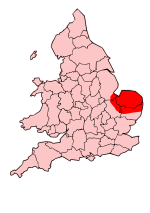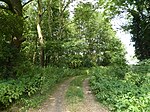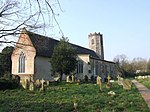Attleborough railway station
AttleboroughFormer Great Eastern Railway stationsGreater Anglia franchise railway stationsPages with no open date in Infobox stationRailway stations in Great Britain opened in 1845 ... and 3 more
Railway stations in NorfolkRailway stations served by East Midlands RailwayUse British English from June 2017

Attleborough railway station is on the Breckland line in the east of England, serving the market town of Attleborough, Norfolk. The line runs between Cambridge in the west and Norwich in the east. Attleborough is situated between Eccles Road and Spooner Row, 108 miles 19 chains (174.2 km) from London Liverpool Street via Ely. The station is managed by Greater Anglia, which also operates most of the services calling at the station. Some East Midlands Railway also stop at Attleborough.
Excerpt from the Wikipedia article Attleborough railway station (License: CC BY-SA 3.0, Authors, Images).Attleborough railway station
New North Road, Breckland District
Geographical coordinates (GPS) Address Nearby Places Show on map
Geographical coordinates (GPS)
| Latitude | Longitude |
|---|---|
| N 52.51428 ° | E 1.02119 ° |
Address
New North Road
New North Road
NR17 2BG Breckland District
England, United Kingdom
Open on Google Maps







